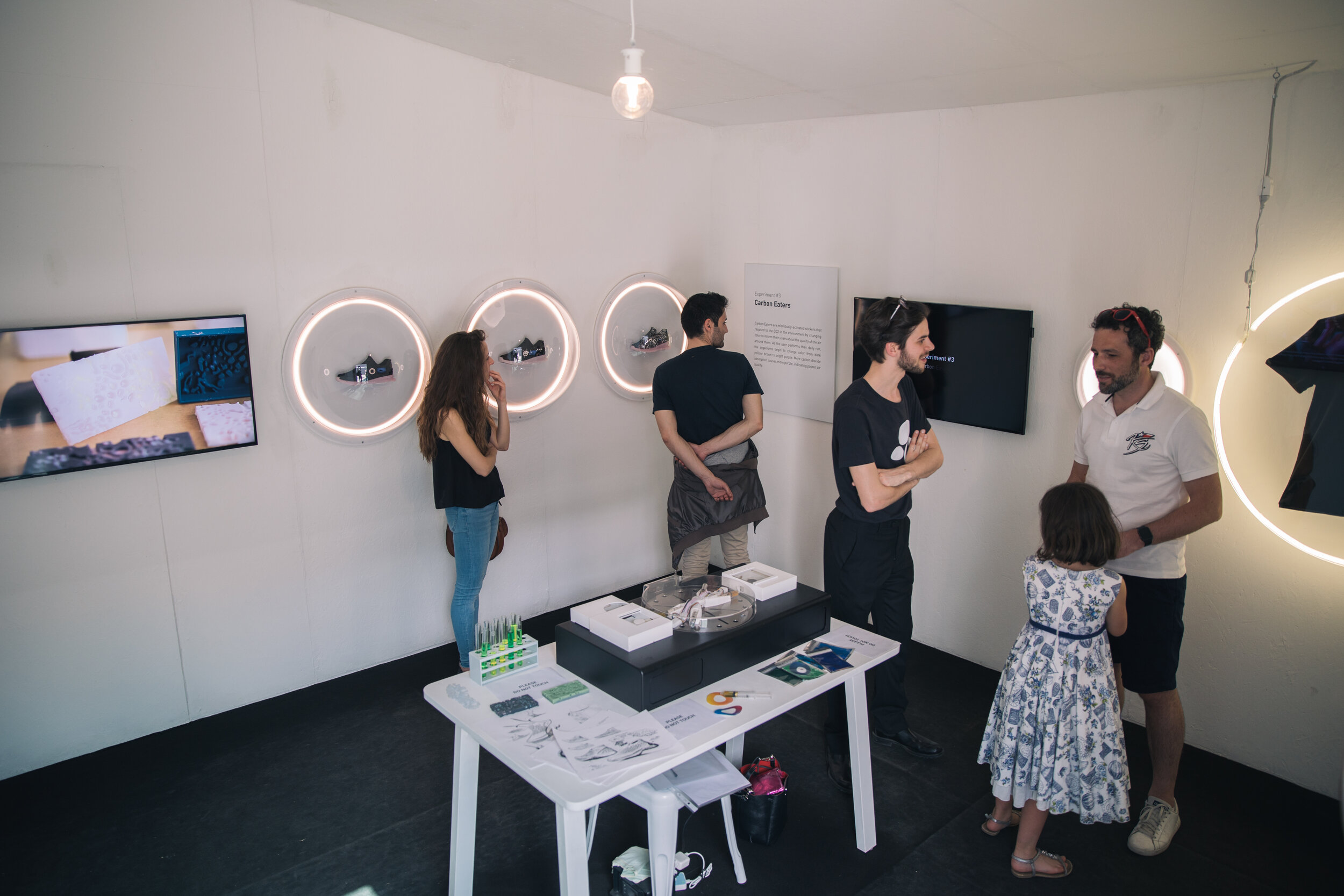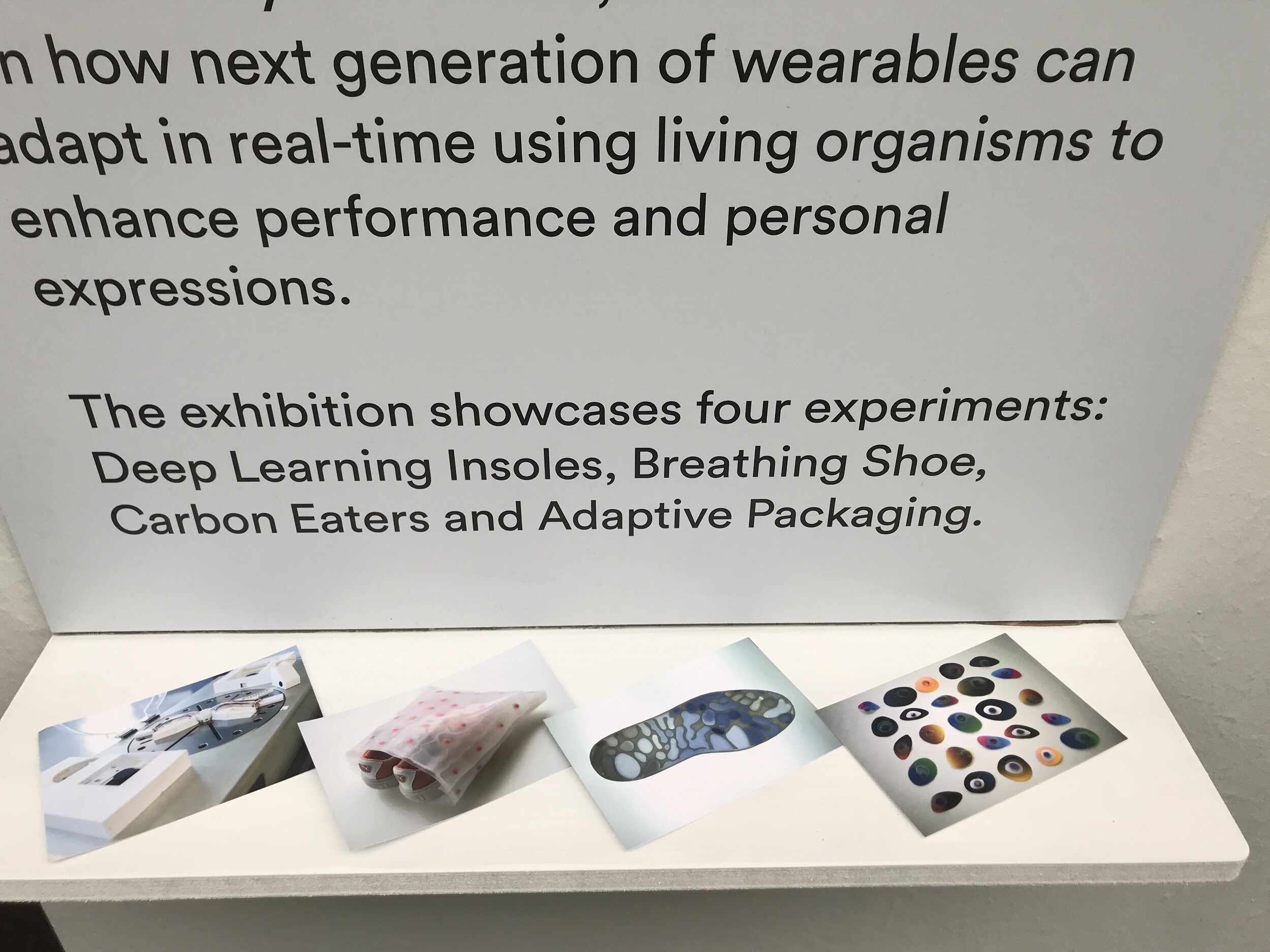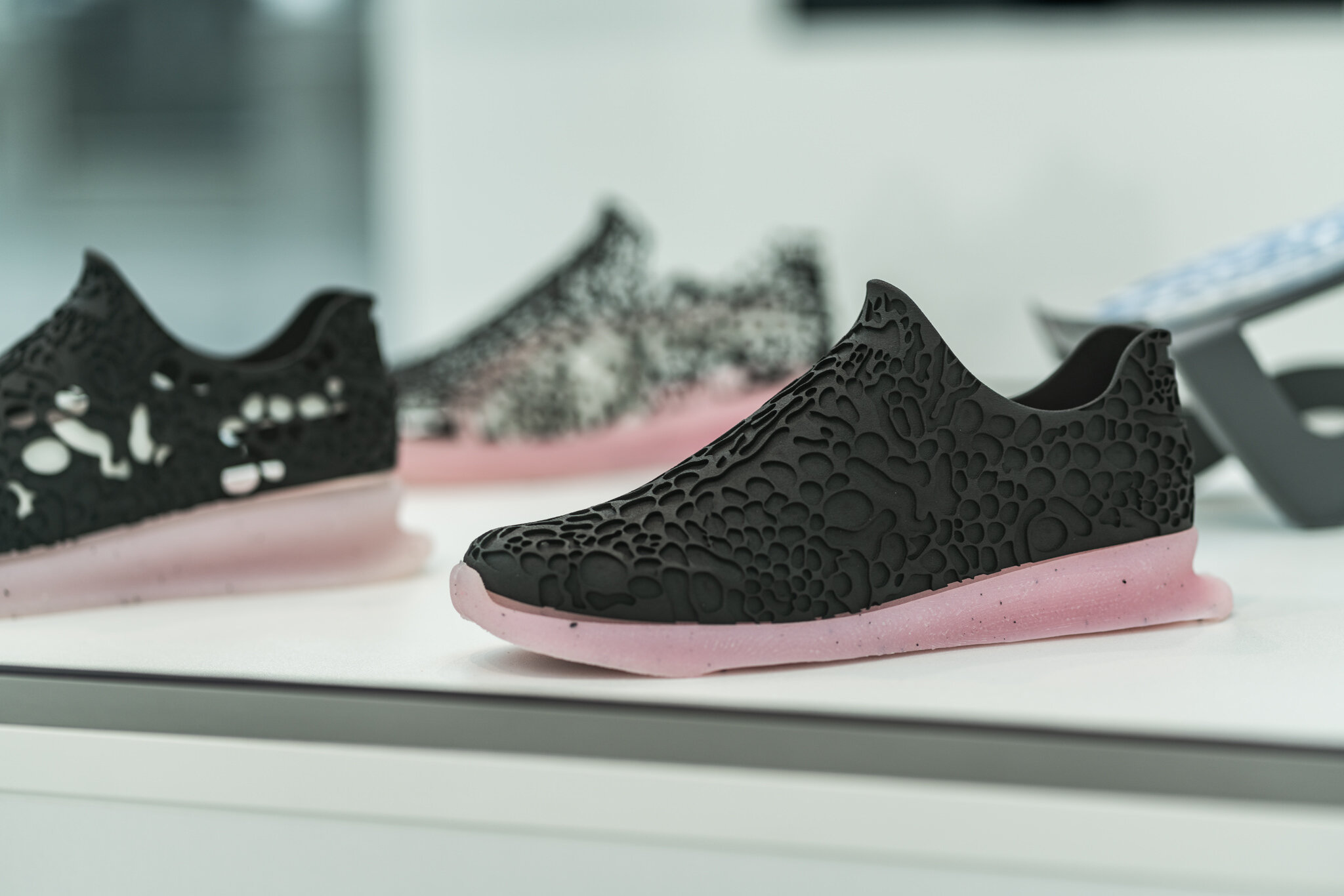PUMA Biodesign:
Living and Breathing the Future of Performance
PUMA + MIT Design Lab with Biorealize
Exhibited at Milan Design Week 2018
A breathing sports shoe, that grows its own air passageways to enable personalized ventilation? A learning insole that prevents fatigue and improves athletes’ performance? A t-shirt that responds to environmental factors by changing its appearance to inform the wearer about the air quality?
What sounds like future visions are actually research results by PUMA and the MIT Design Lab. Biodesign is the practice of using living materials such as algae or bacteria to create products. It makes possible a football jersey made from the silk of a spider or a shoe box grown from mycelium, the root structure of mushrooms. PUMA Biodesign explores the new frontiers of biological design and fabrication to bring advances in science and biotechnologies closer to our daily lives through sport products.
This exhibition, which is powered by the Biorealize desktop bioprototyping platform, will focus on how the next generation of athletic footwear, apparel and wearables can adapt in real-time by using living organisms to enhance performance.

EXPERIMENT 1
DEEP LEARNING INSOLE
Deep Learning Insoles
Deep Learning Insoles are silicone based disposable insoles that contain microbial cultures to monitor biochemical vitals that change during running or workout routines. The microorganisms respond to the skin and sweat and measure long and short-term chemical indicators that indicate fatigue and well-being. The insoles digitize the biochemical signals and provide the user with benchmarks to optimize their performance.

EXPERIMENT 2
BREATHING SHOES
Breathing Shoes
The Breathing Shoe is made of a biodegradable material that is patterned with microorganisms. The organisms respond to the heat generated by the feet and proliferate by consuming the media in the cavities. As media gets consumed, the surface of the shoe begins to create ventilation points allowing more air to flow through. Over time, each shoe begins to take a custom look based on the activity profile of their users.

EXPERIMENT 3
CARBON EATERS
Carbon Eaters
Carbon Eaters are microbially-activated stickers that respond to the CO2 in the environment by changing color to inform their users about the quality of air around them. As the user performs their daily run, the organisms begin to change color from dark yellow-brown to bright purple. More carbon dioxide absorption causes more purple, indicating poorer air quality.

EXPERIMENT 4
ADAPTIVE PACKAGING
Adaptive Packaging
Adaptive Packaging is inflate-on-demand flexible packaging that is programmed to biodegrade after its use. The package is made from biodegradable elastomer and contains two types of microorganisms; one which produces CO2 to inflate the air sacks and the other to deflate them over time by degrading the material. The packaging can be designed for short or long-term usage by timing the degradation process using chemical inhibitors that are printed onto the material.

Milan Design Week 2018



Breathing Shoe

Biodesigner's Table

Milan Design Week 2018



Milan Design Week 2018







Digital by Nature - Munich Airport Exhibition


Digital by Nature - Munich Airport Exhibition

Digital by Nature - Munich Airport Exhibition

Digital by Nature - Munich Airport Exhibition









Digital by Nature - Munich Airport Exhibition


